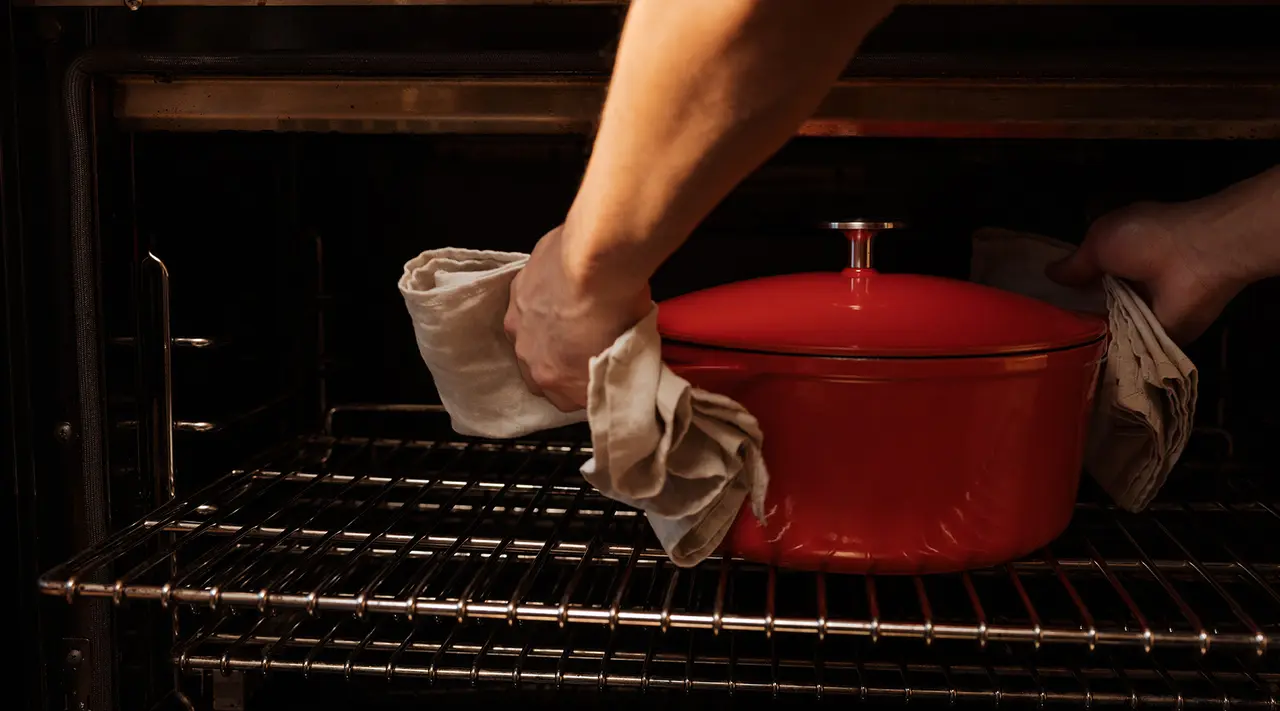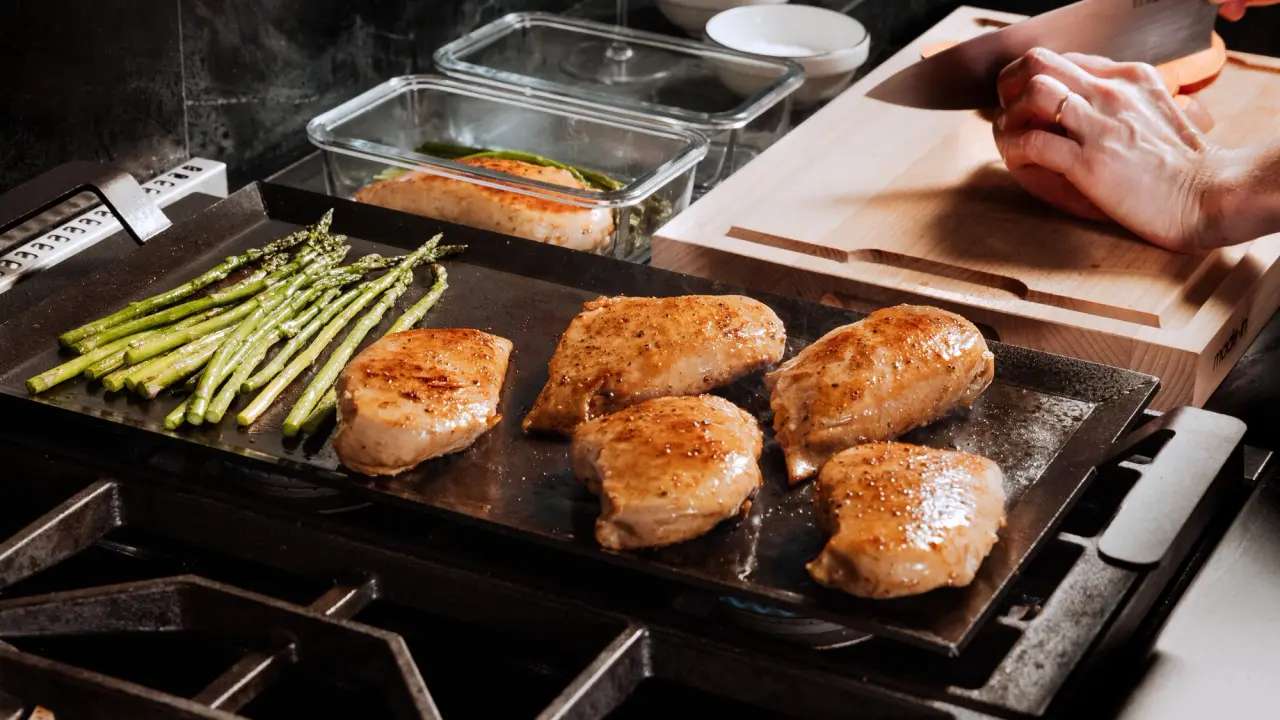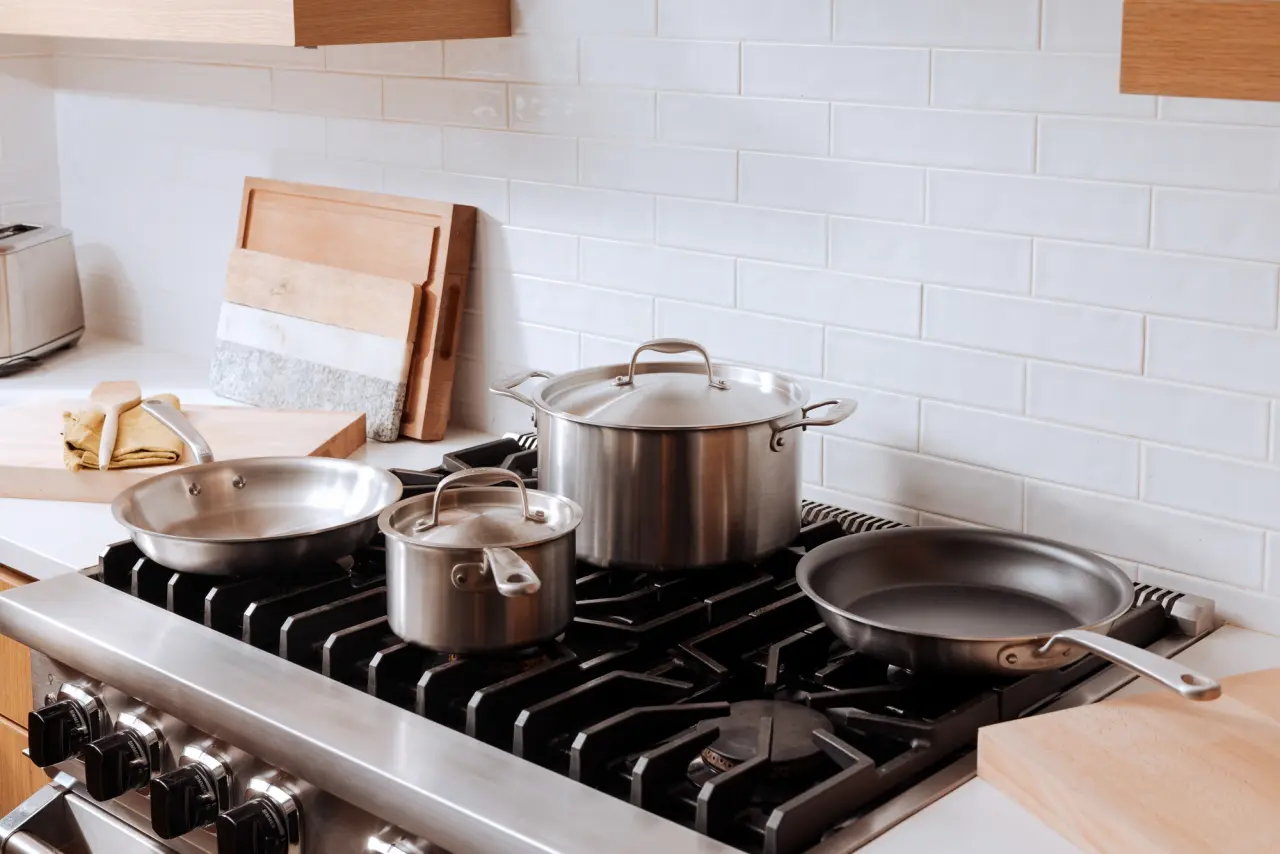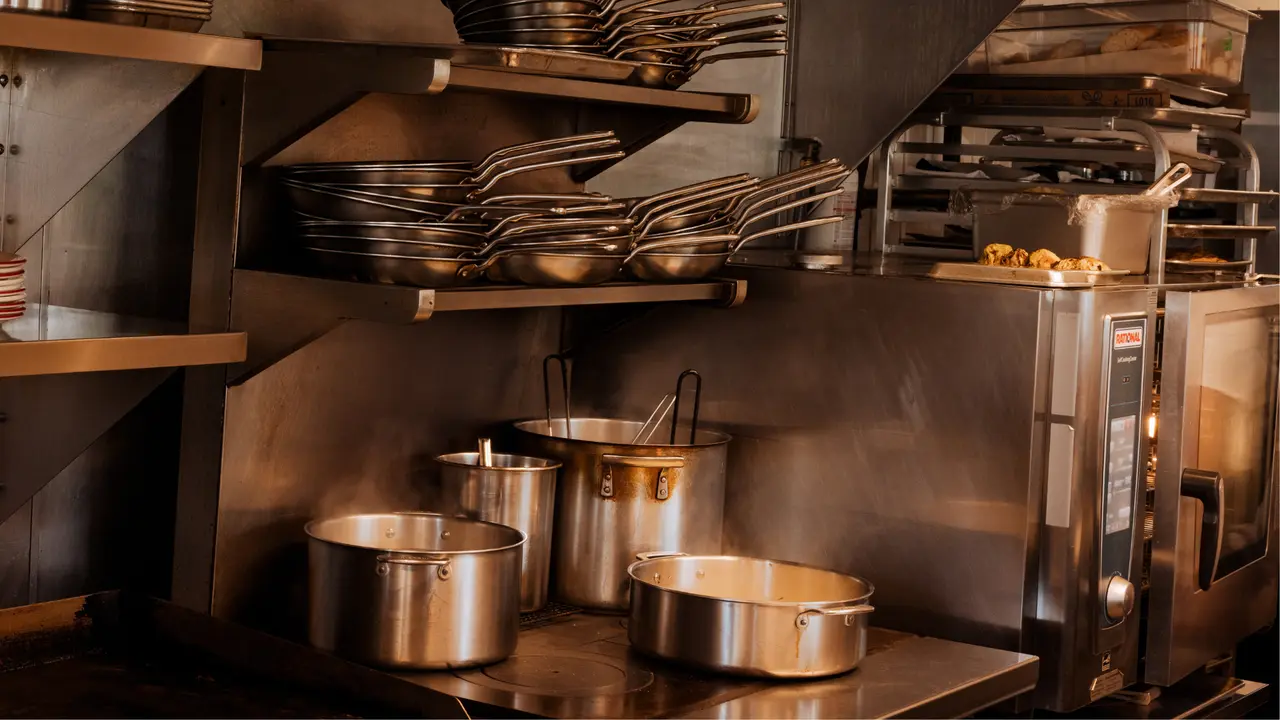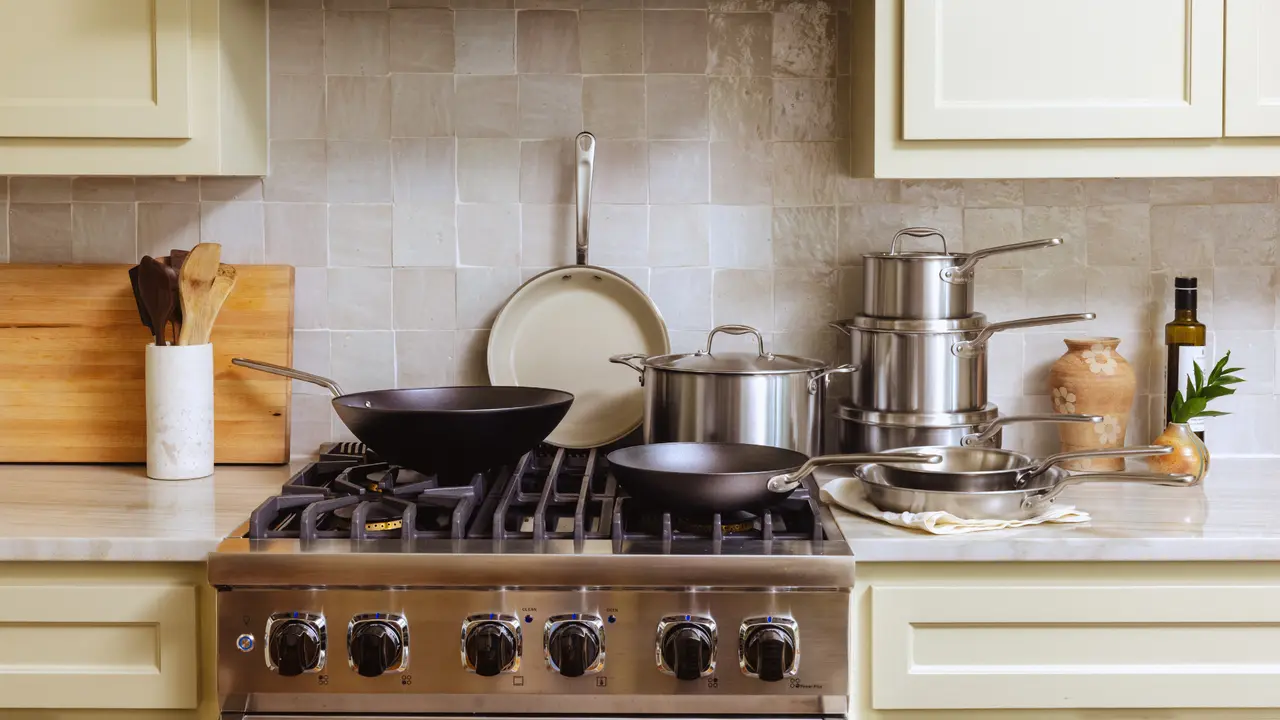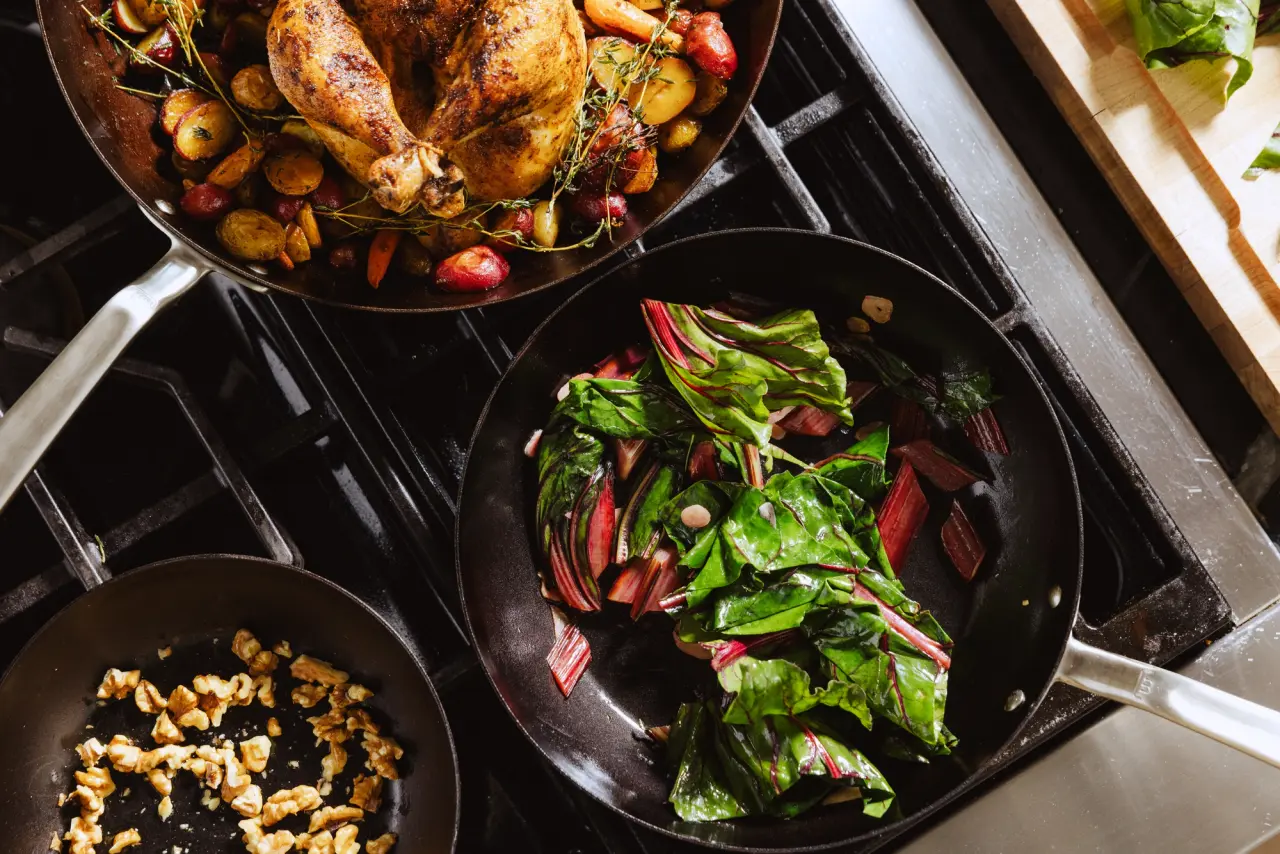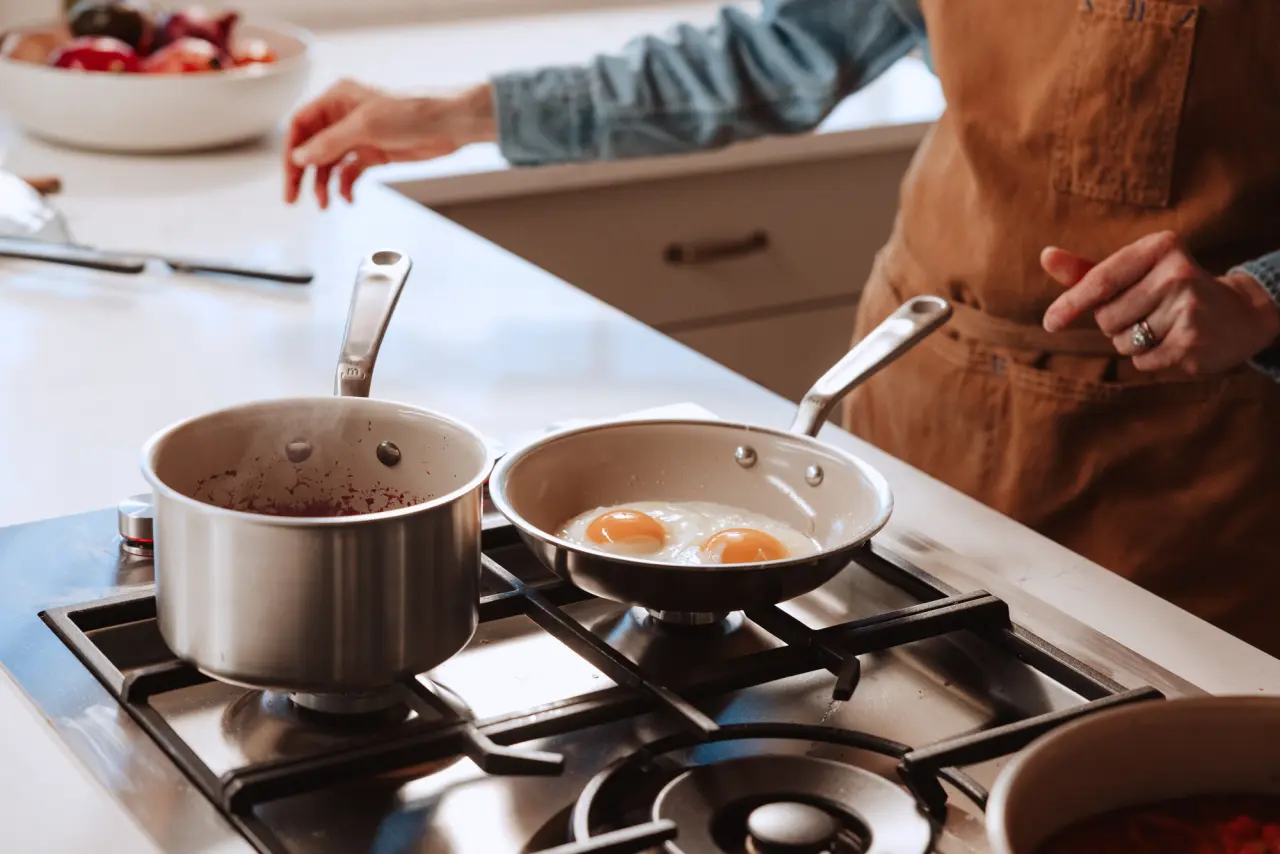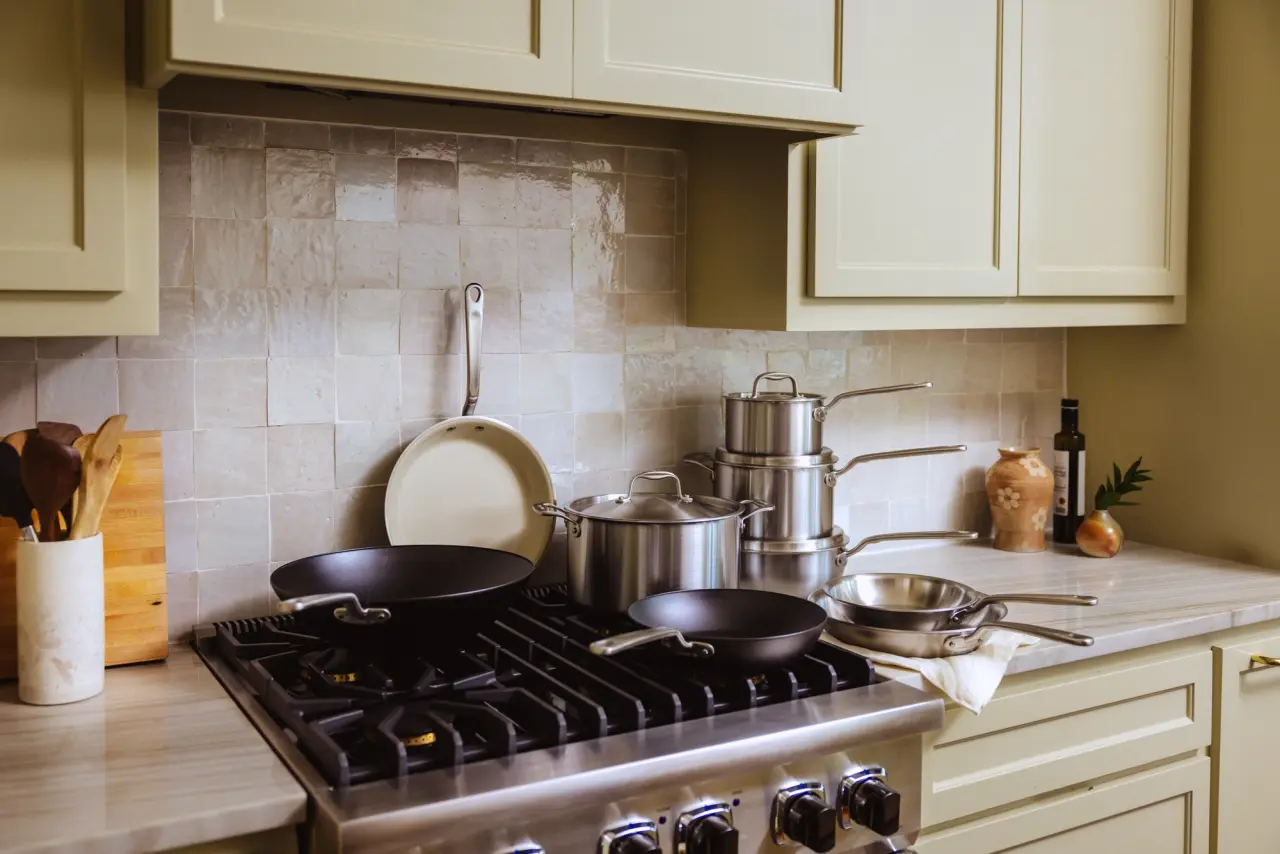When you think of a pot that can do it all, the Dutch oven is likely near the top of the list. The star of “low and slow” cooking, Dutch ovens are particularly well-suited for baking bread, making large batches of stew or sauce, and even deep frying. While there’s no all-purpose pot, this one comes pretty close.
Whether you just received your first Dutch oven or are just trying to understand the fundamentals, we've got you covered. We compiled some of our most-asked questions for you to discover everything there is to know (and love) about this multipurpose, heirloom kitchen tool.
- Why Do I Need a Dutch Oven?
- What are Dutch Ovens Made Out Of?
- Where Is Our Dutch Oven Made?
- What Can You Cook in a Dutch Oven?
- What Shape and Size Dutch Oven Do You Need?
- How Do You Clean a Dutch Oven?
- How Do You Cook with a Dutch Oven?
- What’s Special About Your Lid?
- Do Dutch Ovens Need to be Seasoned?
- Ready to Shop?
Why Do I Need a Dutch Oven?
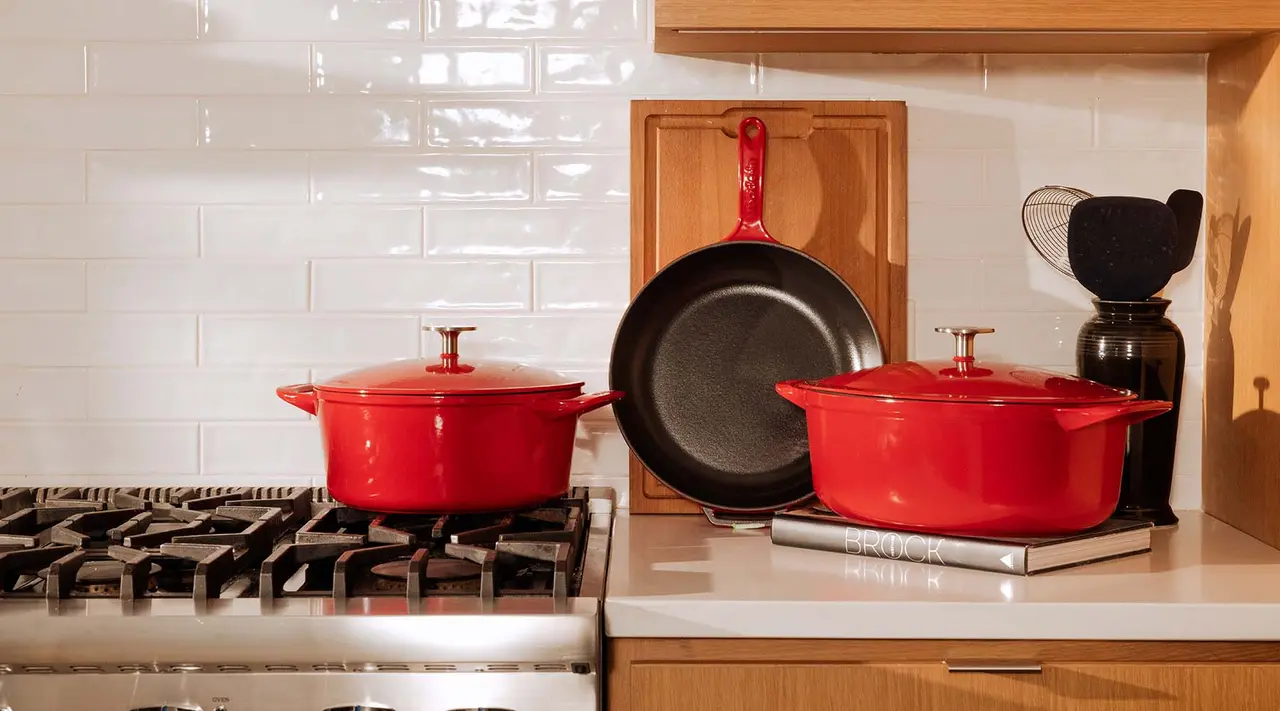
If you already have a heavy-bottomed pot or trusty stock pot, it's worth wondering why you need to add yet another piece of equipment to your arsenal.
Both professional chefs and home cooks value Dutch ovens for their many uses—you can sear, fry, saute, bake, braise, or simmer with ease. The durable combination of cast iron and virtually non stick enamel coating results in easy cooking without having to clean up a burnt, stuck-on mess (though if that happens, we have you covered). Dutch ovens are commonly called "heirloom" tools, as their construction ensures they last a lifetime and can be passed down from one generation to another.
What are Dutch Ovens Made Out Of?
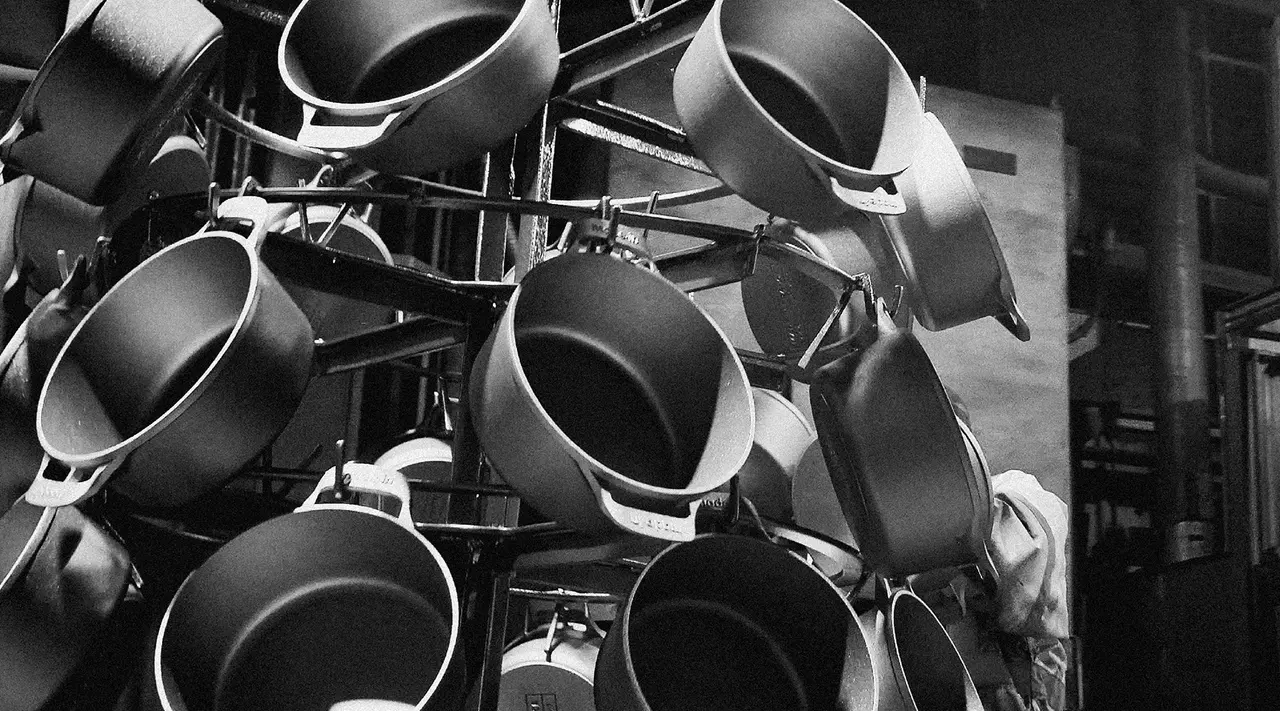
Most Dutch ovens, including ours, feature a cast iron core, typically forged from a mixture of iron and carbon. This core is excellent at holding heat, making it great for recipes with lengthy cook times, like stews and braises. While raw cast iron can be brittle and requires special care like seasoning, enameled cast iron (like ours) protects the cast iron core from rust while adding both a durable and easy-to-clean surface.
We've perfected the construction by hand-applying the enamel to the cast iron core in order to make sure it’s evenly applied all over.
Where Is Our Dutch Oven Made?
We chose to craft our Dutch Ovens in Northeast France, home of the world's finest cast iron, in a factory that has been producing enameled cast iron for over a century. Like everything else we do, this selection process was done with care—years of it, in fact—to find the right craftspeople to create a Dutch oven worthy of a spot at your table.
What Can You Cook in a Dutch Oven?

Dutch ovens are most synonymous with low and slow cooking techniques, like braising meat or simmering stews. While it absolutely excels at that, it can do so much more, from deep frying to building a flavorful sauce. It’s designed to be moved from stovetop to oven with relative ease, which means it’s also great for oven baked dishes, roasted holiday mains, reverse searing, or keeping hot drinks like mulled wine warm. Bakers also love the solid construction and oval or circular shapes for bread.
If you're in need of more inspiration, be sure to check out our favorite Dutch oven recipes.
What Shape and Size Dutch Oven Do You Need?
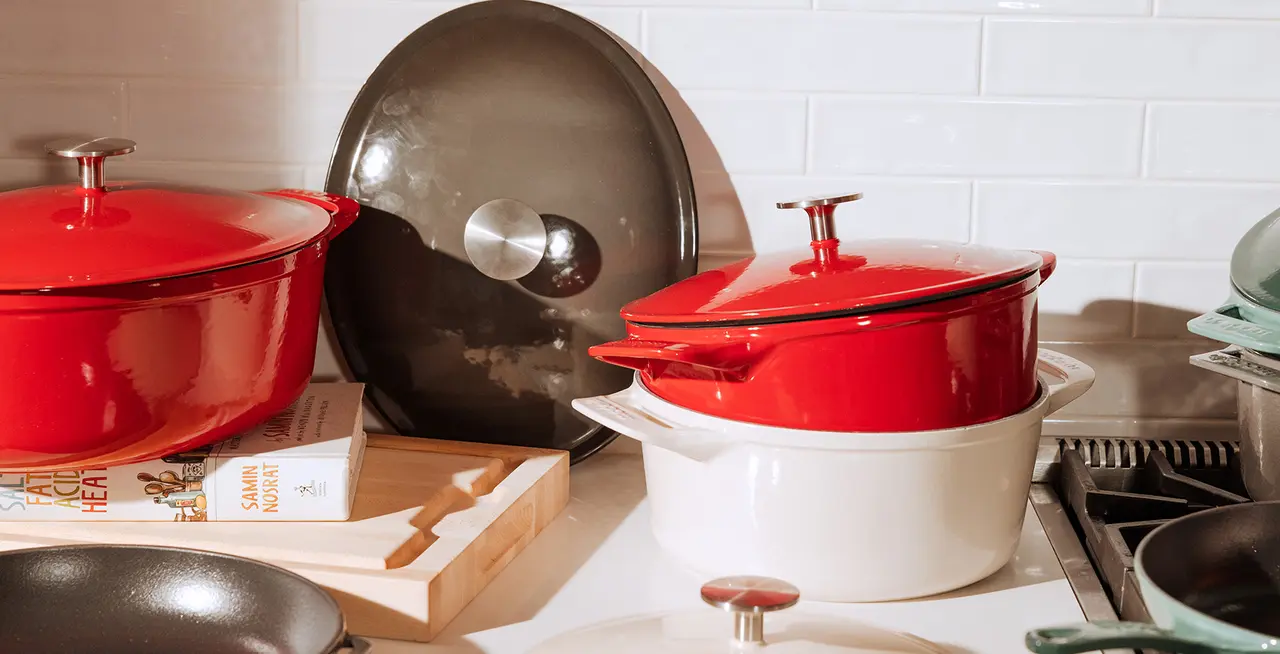
Dutch ovens come in a few different shapes (including both oval and circular) and sizes (as small as 1 QT to 9 QTs or larger). We offer circular 3.5 and 5.5 QT options, as well as a larger 7.5 QT oval option. While the best size for you will depend on a variety of outside factors, like how many people you're typically cooking for, we recommend starting with a standard size, like a circular 5.5 QT, before expanding to bigger or smaller sizes and different shapes.
How Do You Clean a Dutch Oven?
The enamel coating on our Dutch Oven makes clean-up much easier, but there are a few tips to keep in mind—for an even deeper dive, reference our guides on cleaning Dutch ovens and enameled cast iron cookware.
Avoid Abrasive Cleaners
Even with the protective enamel coating, you do need to be careful that you don’t scratch the surface of your Dutch oven—so we recommend avoiding steel wool or other abrasive cleansers that could damage the enamel.
Do Not Use the Dishwasher
Dutch ovens—and most other cookware, for that matter—should never be put in the dishwasher, where it can easily get scratched by metal utensils and damaged by harsh cleaners. Instead, warm water, dish soap, and a dish sponge should be enough to get the surface clean. If you have particularly stubborn residue or are dealing with a burnt Dutch oven, let it soak until loosened. But don't soak up to the unfinished cast iron lip—if left soaking too long, the unfinished lip can rust.
How Do You Cook with a Dutch Oven?
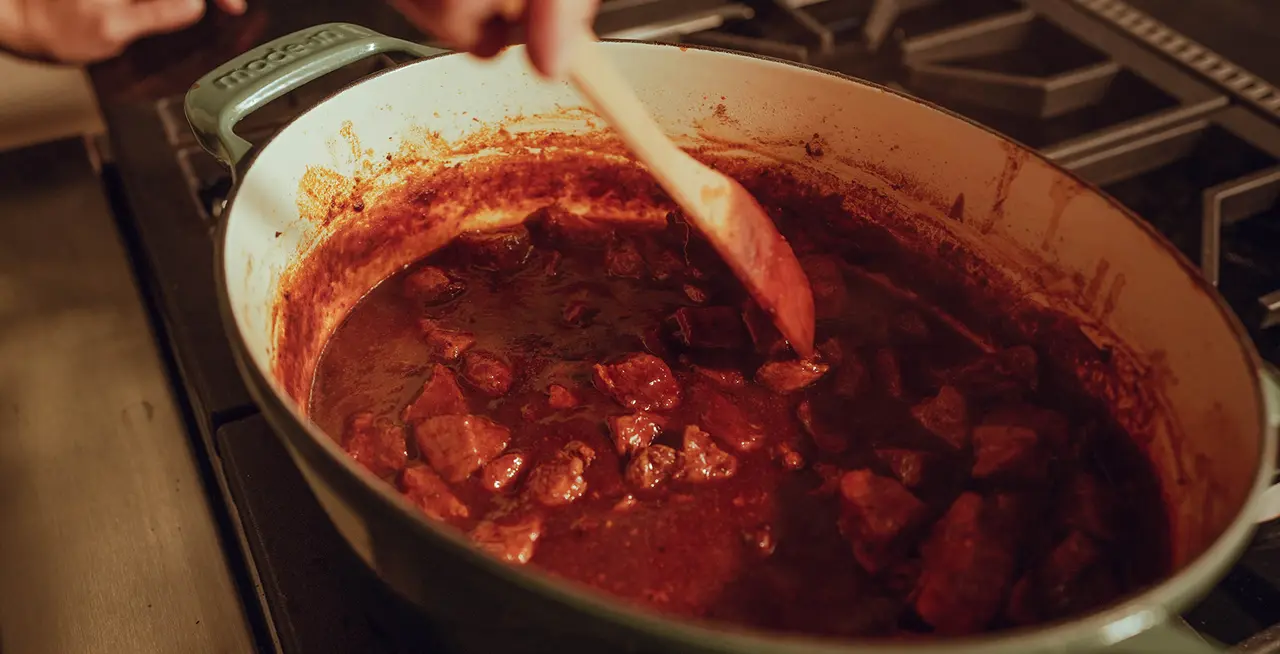
Our Dutch Oven works on all types of cooking surfaces—gas stoves, electric burners, and flat tops, plus the iron composition of the cast iron core makes it induction compatible. It’s also oven safe up to 580F, 80F higher than other French-made Dutch ovens. The knob on the handle makes the lid oven safe as well.
When cooking on the stovetop, we recommend using medium to medium-high heat so that you do not scorch or discolor the enamel. It’s also best to use wooden or silicone utensils with your Dutch oven, as prolonged use of sharp metal utensils can cause scratches, which may not affect your cooking but can be very apparent on the light-colored interior.
What’s Special About Your Lid?
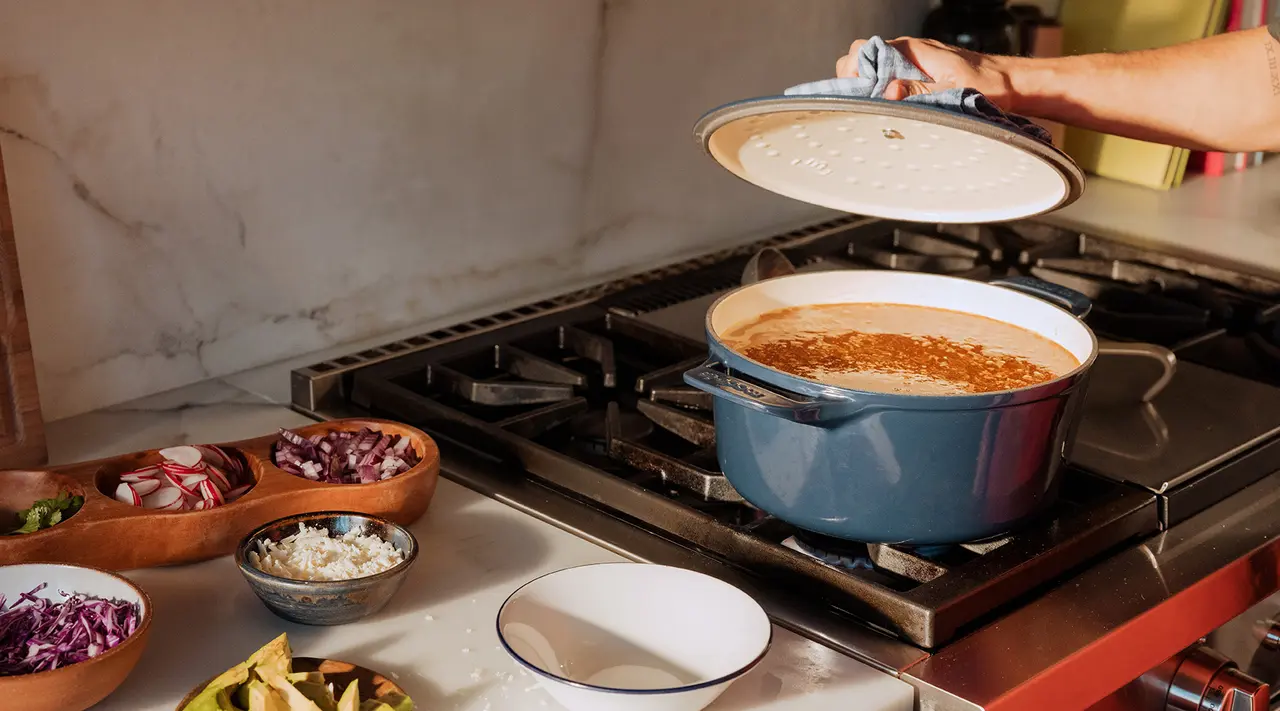
Our proprietary Cloud Cover Lid is specially designed with pea-sized dimples that collect the steam rising from your dish and evenly return it to your food. This self-basting lid ensures that you’re never left with a dry roast or an uneven braise, and gives your bread a crusty exterior and a soft, chewy crumb.
Note that when used on the stovetop, the knob on top of your Dutch oven will get hot over time. If it’s placed in the oven, the knob will increase in temperature with the rest of the pan. For that reason, we recommend being safe and keeping your oven mitts or a kitchen towel handy.
Do Dutch Ovens Need to be Seasoned?
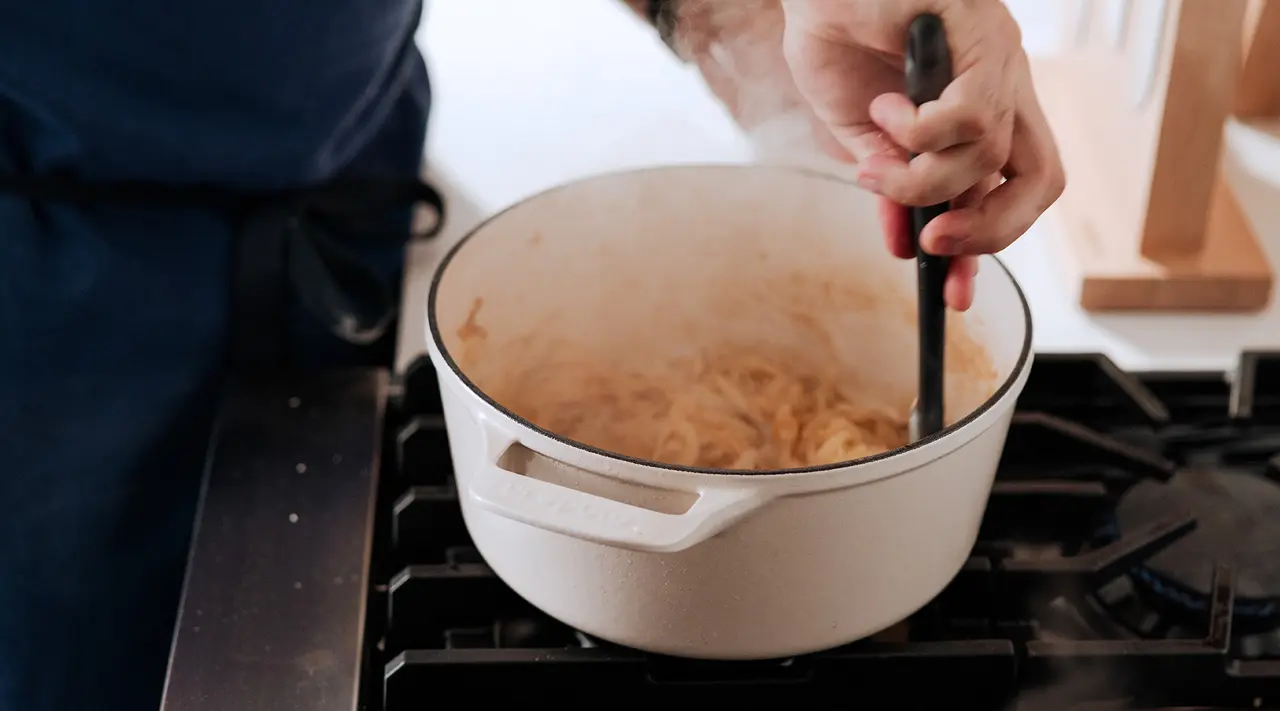
No, you do not need to season our Dutch Oven (or any other piece of enameled cast iron cookware). The entirely enameled surface protects the cast iron core, making it essentially non stick. This enameling is also a nonreactive material that ensures you can cook with acidic ingredients, like vinegar, wine, or tomatoes, without damaging the coating.
Ready to Shop?
Hopefully, this helped answer any questions you have about why a Dutch oven should be your next cookware purchase. Our French-made Dutch Ovens are crafted with care at an affordable price, and if you follow these cooking and care instructions, they can easily be passed down to the next generation.
